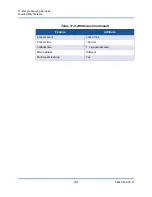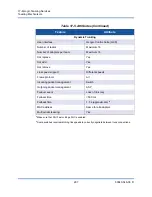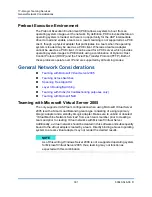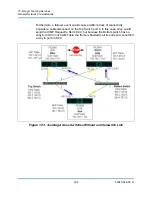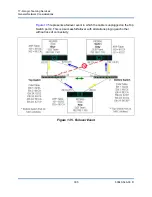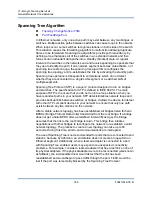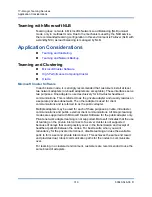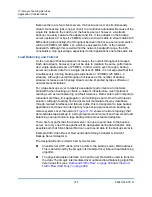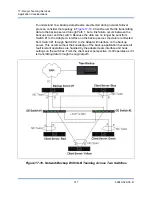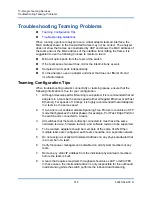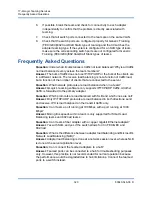
17–QLogic Teaming Services
General Network Considerations
307
83840-546-00 D
Topology Change Notice (TCN)
A bridge/switch creates a forwarding table of MAC addresses and port numbers
by learning the source MAC address that received on a particular port. The table
is used to forward frames to a specific port rather than flooding the frame to all
ports. The typical maximum aging time of entries in the table is 5 minutes. Only
when a host has been silent for 5 minutes would its entry be removed from the
table. It is sometimes beneficial to reduce the aging time. One example is when a
forwarding link goes to blocking and a different link goes from blocking to
forwarding. This change could take up to 50 seconds. At the end of the STP
re-calculation a new path would be available for communications between end
stations. However, because the forwarding table would still have entries based on
the old topology, communications may not be reestablished until after 5 minutes
when the affected ports entries are removed from the table. Traffic would then be
flooded to all ports and re-learned. In this case it is beneficial to reduce the aging
time. This is the purpose of a topology change notice (TCN) BPDU. The TCN is
sent from the affected bridge/switch to the root bridge/switch. As soon as a
bridge/switch detects a topology change (a link going down or a port going to
forwarding) it sends a TCN to the root bridge through its root port. The root bridge
then advertises a BPDU with a Topology Change to the entire network.This
causes every bridge to reduce the MAC table aging time to 15 seconds for a
specified amount of time. This allows the switch to re-learn the MAC addresses as
soon as STP re-converges.
Topology Change Notice BPDUs are sent when a port that was forwarding
changes to blocking or transitions to forwarding. A TCN BPDU does not initiate an
STP recalculation. It only affects the aging time of the forwarding table entries in
the switch.It will not change the topology of the network or create loops. End
nodes such as servers or clients trigger a topology change when they power off
and then power back on.
Port Fast/Edge Port
To reduce the effect of TCNs on the network (for example, increasing flooding on
switch ports), end nodes that are powered on/off often should use the Port Fast or
Edge Port setting on the switch port they are attached to. Port Fast or Edge Port is
a command that is applied to specific ports and has the following effects:
Ports coming from link down to link up will be put in the forwarding STP
mode instead of going from listening to learning and then to forwarding. STP
is still running on these ports.
The switch does not generate a Topology Change Notice when the port is
going up or down.
Layer 3 Routing/Switching
The switch that the teamed ports are connected to must not be a Layer 3 switch or
router. The ports in the team must be in the same network.



